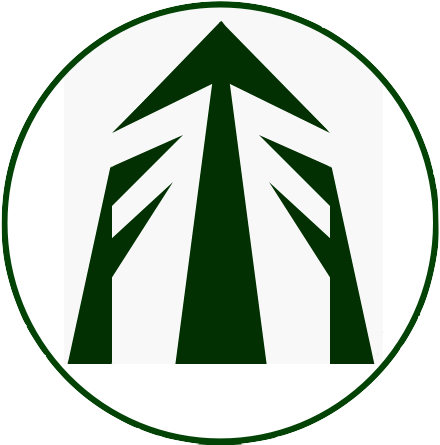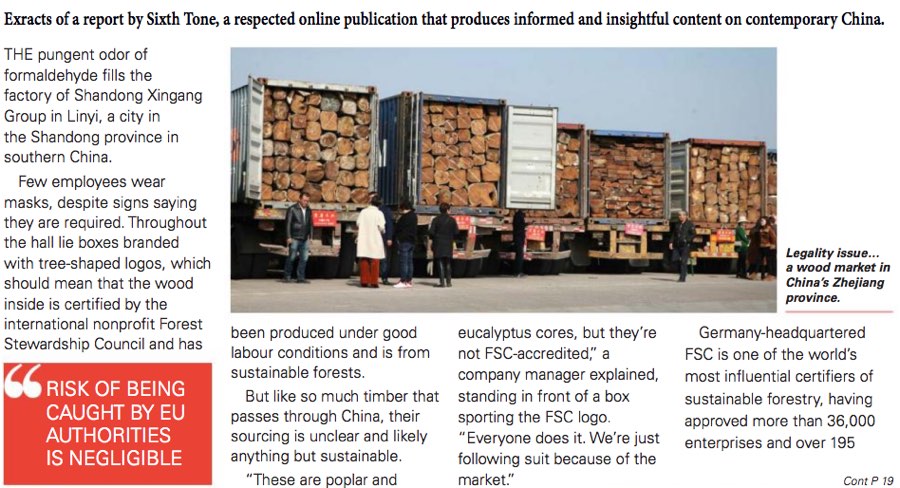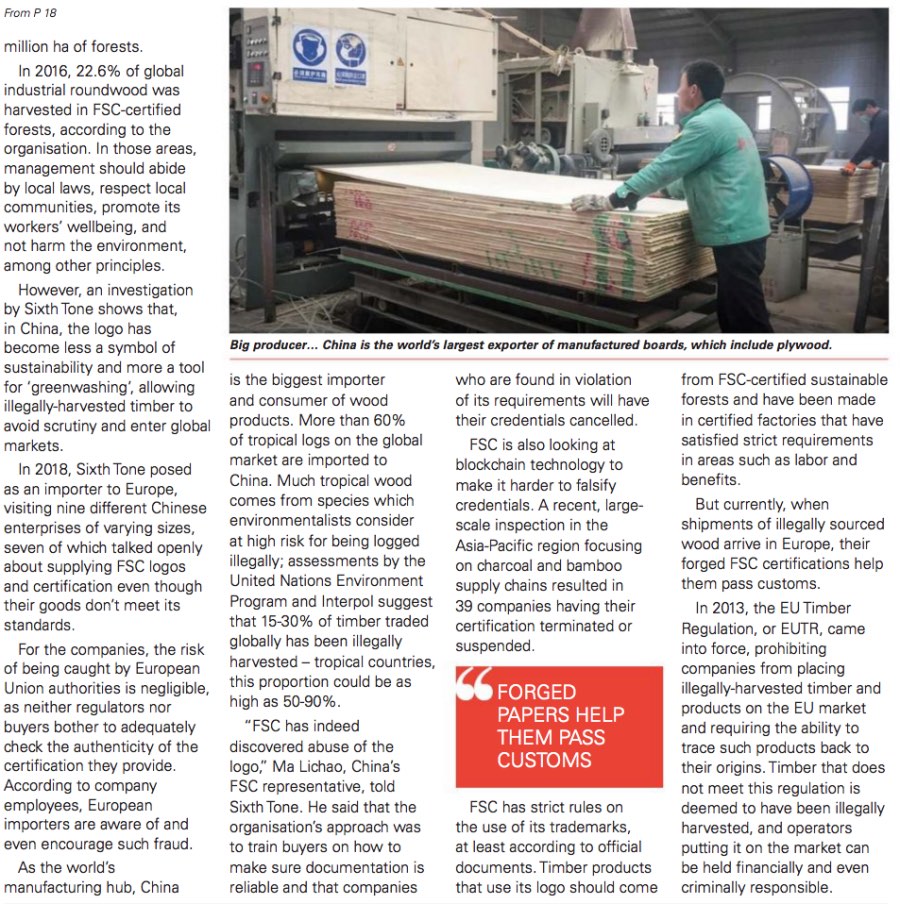|
|
||
In this newsletter:
I've been quiet for way too long, but by no means inactive. I can say that sitting on three standards committees takes its toll on your time. This may continue for some time but am optimistic all three will be finalised by the end of the year. These standards are critically important for us to be able to rebuild markets for misappropriated timbers, traditional species now labelled as "alternatives". Building code Public comments are being called for AS/NZS 1720.1, see below. Many thanks to members who submitted public comments to Standards NZ for NZS 3602 and NZS 3640. Billion trees Te Uru Rakau and the billion trees campaign are great initiatives and an opportunity for growers to plant more specialty timber species. That said, I do have reservations about whether the right tree really will get planted in the right place, to assure continuity of supply for specialty timbers and in the quantities required to develop stable markets. The radiata industry and especially larger growers remind us that the No.1 constraint to diversifying our estate is the lack of a secure local market for specialty logs and timber. The chicken and egg excuse, the risk of diversifying being too great unless someone else does it first. Incentives are greatest for planting native trees, which suggests that this grant scheme is all about restoring indigenous forest cover for long term carbon, rather than incentivising production forestry and securing future revenue streams. I can confidently say that exotics offer faster sequestration and better economic outcomes. But will "production" forestry lean more towards planting only radiata, the "safe" option? I'm species agnostic, but economics obsessed - my choice of species is driven by economic value. Value generated by timber production. I can also confidently say that returns from exotic specialty timber species could be better than radiata, but only if there were to be a critical mass of growers willing to plant them. Species like redwood, cypress and eucalypt are top of the list for plantations, while indigenous species like totara and beech are in my mind better suited to be managed natural stands rather than plantations. Two key factors dictate profitability of plantations - growth rate and timber value. Would be nice to see the kind of incentives we're seeing for planting natives also going into exotic specialty timber species to offset the high costs of establishing them. NZ Wood Design Guides NZ Wood will be producing a series of wood design guides. First off the ranks is the NZ Wood Design for Fire Safety Guide, which is available for Industry comment until the 28th February 2019. Download a copy by following this link. Forward all comments by email to design@nzwood.co.nz. These will be reviewed by the NZ Wood Design Guide Steering committee. What aroused my interest was page 17, which states that rate of charring is dependant on wood density. That is, higher density wood species have a slower charring rate, so don't need to be as large in cross section for the same fire resistance. The NZ Wood Design for Fire Safety Guide will be available in its final form from April 2019 onwards. Dean Satchell If you have a story for this newsletter, please get in touch with Dean by email. Masking the legitimacy of timber exports from China - The following article comes from Timber and Forestry Enews, issue 544, January 2019. It's no surprise to me that illegal old growth rainforest destruction continues unabated overseas, driven by cheats that use forest certification programmes to build a corrupt market for illegal timber. The result is fraudulently certified product imported into NZ to placate the increasingly discerning consumers who want to do the right thing and buy "sustainably sourced timber". Indeed, "Certified timber is now essential to satisfy the design & building sectors"*. But wait a minute... is the buyer not aware that locally sourced product doesn't require certification because it is all grown and sourced legally? Apparently not, the playing field is not level. Imported timber all gets the stamp of approval while only the large corporate growers of radiata pine can afford certification, leaving the rest of us out in the cold. What makes this situation even worse is that NZ is one of the few countries in the world that still does not restrict illegal timber from entering the country. An official from MPI told me before the election that they had no intention of doing anything about that. Lets hope that a paradigm shift filters down to such officials from a new government that actually wants our sector to thrive.
*Timber and Forestry Enews issue 541, December 2018. NZ SPECIALTY TIMBER AWARD: Sponsored by NZ Farm Forestry Association Draft Standard NZS AS 1720.1 Timber Structures - Part 1: Design Methods NZS AS 1720.1 sets out general requirements for the verification of timber structures and elements. It includes calculation methods and design data appropriate for commonly encountered structural elements and materials. I sit on the standards committee developing this standard. This New Zealand standard is to supersede NZS 3603 timber Structures and is an adoption of the Australian equivalent, AS 1720.1:2010 Timber structures Part 1: Design methods. A list of modifications can be found under the ‘Foreword’ section of the draft New Zealand standard. The draft is available for public comment until 23rd February 2019. Dean Satchell Timber Flooring Applications - getting it right first time This brochure made by the Australasian Timber Flooring Association is essential information for architects, specifiers, builders and consumers. Instead of the usual adverts as displayed in the marketplace, here are some of the enquiries received from the contact form on the website: Hi I have just seen on TV1 on the news tonight that the Totara is looking at being milled as a sustainable wood. We are about to build a new house in Leigh, Warkworth and would like to look at using Totara wood for our floors. Can you please advise where we go for this and how affordable is it? We would love to use a local wood especially if it is going to be sustainable. We have about a ha of 40 year old Eucalyptus saligna and are interested in finding out what services are available for logging and on site milling. Selling 27 year old pruned sed30 cm macrocarpa logs small defect core Our organization represents professionnal of the fruits and vegetables industry. We are looking to create crates wood to New Caledonia in order to package fruits and vegetables. Hi I'm after some lengths of poplar. I use it to make paddles for outrigger canoes. I live in Hawkes bay and was wondering what you have available and at what cost. Our house is 18 years old with Fastigata throughout much of the house. We need a small joinery job done that requires a piece of Fastigate no more than 1M*1M. Can you direct me to a local supplier in the Wellington region who could source this for me? Hi there I'm just after a slab of totara for carving, approximately 350 x 200 x 400 or some where around there if avaiaible could you please contact me on 0273080307 or via email thanks I'm researching points of supply for timber - other than the stuff you can buy from Bunnings or Mitre 10. I'd like to make some furniture (starting with an ornate dog box) and would like to use wood that is not pine. Can you point me in the right direction to obtain such pieces of timber? I'm trying to source some totara slabs for carving. Sizes about 1.5m long by 0.5m wide. 15mm to 35mm thick. I am located at Lake Hawea (Wanaka). DO you know of any local suppliers? My dad has a log that he retrieved from a sand bank, he thinks it is a kauri log that came down the Hokianga from the days when they exported Kauri out of the Hokianga. He wanted me to contact someone that maybe interested in buying it as it is just sitting there. His contact number is 09 4095182 his name is George. |
||
Disclaimer: While every effort is made to ensure the accuracy of the information provided on this site, Farm Forestry Timbers Society do not accept liability for any consequences arising from reliance on the information published. If readers have any doubts about acting on any articles they should seek confirming, professional advice.
 Farm Forestry New Zealand
Farm Forestry New Zealand Farm Forestry Timbers
Farm Forestry Timbers 



